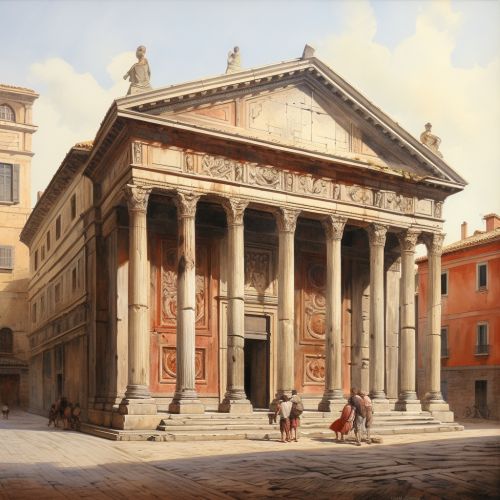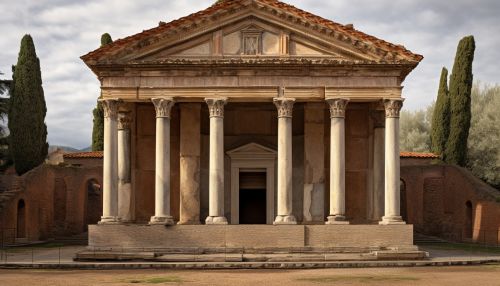De architectura
Introduction
"De architectura" is a treatise on architecture written by the Roman architect Vitruvius in the 1st century BC. It is the only surviving major book on architecture from classical antiquity. Vitruvius dedicated his work to his patron, the emperor Augustus, in the hope that it would bring him fame and fortune. The text is divided into ten books dealing with various aspects of classical architecture, including the principles of design, the types of buildings, and the construction techniques used by the Romans.
Historical Context
Vitruvius wrote "De architectura" in the period of the Pax Romana, a time of relative peace and stability throughout the Roman Empire. The treatise reflects the technological and architectural advancements of the time, as well as the influence of Greek architecture on Roman designs. The work is also a testament to the Roman emphasis on practicality and utility in their architectural designs, as opposed to the more aesthetic focus of the Greeks.


Content of the Treatise
"De architectura" covers a wide range of topics related to architecture and construction. The ten books of the treatise are as follows:
- The Education of the Architect: Vitruvius discusses the qualifications and skills necessary for an architect. He emphasizes the importance of a broad education, including fields such as history, philosophy, music, medicine, and law, in addition to the technical skills of drawing and geometry.
- The Principles of Building: This book covers the basic principles of construction, including the use of materials, the importance of site selection, and the role of climate in architectural design.
- The Design of Public Buildings: Vitruvius discusses the design and construction of public buildings, including temples, basilicas, and theatres.
- The Design of Private Buildings: This book covers the design of private buildings, including houses and villas.
- The Design of Civil Engineering Works: Vitruvius discusses the design and construction of civil engineering works, including roads, bridges, and aqueducts.
- The Design of Machinery: This book covers the design of various types of machinery, including siege engines and water clocks.
- The Design of Timekeeping Devices: Vitruvius discusses the design of sundials and water clocks.
- The Design of Hydraulic Works: This book covers the design of hydraulic works, including aqueducts and water supply systems.
- The Design of Military Works: Vitruvius discusses the design of military works, including fortifications and siege engines.
- The Design of Theatres: This book covers the design of theatres, including the acoustics and the layout of the stage and seating area.
Influence and Legacy
"De architectura" had a profound influence on the development of architecture in the Western world. It was widely read and studied during the Renaissance, and many of its principles were incorporated into the architectural practices of the time. The treatise also influenced the work of many famous architects, including Leon Battista Alberti, Andrea Palladio, and Michelangelo. Today, "De architectura" is considered a seminal work in the field of architecture, and it continues to be studied by architects and scholars around the world.
